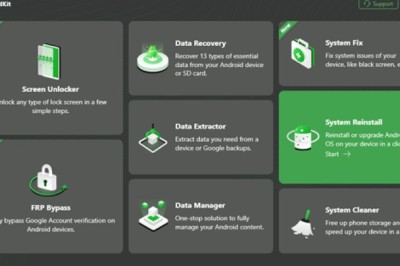views

Photo by Mikhail Nilov
Any successful legal practice hinges on effective client communication. Whether you're a seasoned attorney or just starting your career, the ability to communicate clearly and empathetically with clients can make or break your professional relationships.
This article will explore best practices and tools for improving client communication in the legal field, helping you build stronger, more trustful client relationships.
Understanding Client Needs
When clients feel heard and understood, they are more likely to trust you and engage in a productive working relationship. Let's delve into the key aspects of understanding your client’s needs:
1. Active Listening
Active listening is more than just hearing words—it's about understanding the underlying messages and emotions. Pay close attention to what your clients say, ask clarifying questions, and reflect on what you've heard to ensure understanding. This not only builds trust but also helps you gather crucial information for their case.
2. Asking the Right Questions
Knowing what questions to ask can significantly impact your ability to understand your client's needs. Open-ended questions encourage clients to share more information, providing insights into their concerns and expectations.
3. Empathy and Understanding
Empathy goes a long way in client communication. Show your clients that you genuinely care about their situation and are committed to helping them. This emotional connection can make clients feel more comfortable and valued.
How to Improve Client Communication
Improving client communication involves adopting various strategies and tools to ensure clear, consistent, and empathetic interactions. From utilizing technology to honing your interpersonal skills, there are numerous ways to enhance how you communicate with your clients.
Let's explore some practical steps and tools you can use to make a significant impact on your client relationships.
Email Communication Best Practices
Emails are a staple in professional communication. To ensure your emails are effective, follow professional email etiquette.
- Use Clear Subject Lines: Make the purpose of the email immediately obvious.
- Formal Salutations: Address clients formally unless instructed otherwise.
- Concise and Clear Content: Be brief but informative. Avoid jargon and overly complex sentences.
- Professional Tone: Maintain a professional tone throughout.
- Proper Formatting: Use paragraphs, bullet points, and headings to enhance readability.
- Attachments: Clearly label any attachments and reference them in the body of the email.
- Follow-Up: If you haven’t heard back in a reasonable time, a polite follow-up email can be useful.
Phone Communication Techniques
Phone calls can be more personal and immediate than emails. Here are the best practices you should keep in mind:
- Preparation: Have all relevant information and documents ready before the call.
- Active Listening: Pay full attention to the client, acknowledging their concerns.
- Clear and Concise Speech: Speak clearly and avoid using jargon.
- Respect Time: Be mindful of the client’s time and keep the conversation focused.
- Follow-Up: Send a follow-up email with a detailed summary of key discussion points, ensuring clarity and next steps.
Video Conferencing Tools
Client meetings increasingly rely on video conferencing via platforms like Zoom, Microsoft Teams, and Google Meet. Ensure success with these tips:
- Test Equipment: Ensure your camera, microphone, and internet connection are working properly.
- Professional Appearance: Maintain a professional appearance by dressing appropriately, just like you would for in-person ones.
- Quiet Environment: Choose a quiet location to minimize background noise.
- Good Lighting: Ensure your face is well-lit and clearly visible.
- Punctuality: Join the meeting on time, or a few minutes early.
- Prepare Materials: Have all necessary documents and information ready to share.
Client Meetings and Consultations
Whether in-person or virtual, ensure smoother client meetings by following these best practices:
- Thorough Preparation: Review all relevant case details and prepare necessary documents.
- Clear Objectives: Have a clear agenda and objectives for the meeting.
- Client-Centered Approach: Focus on the client's needs and concerns.
- Effective Communication: Use clear and concise language to explain complex legal issues.
- Follow-Up: Craft a follow-up email to effectively summarize the key discussion points and outline the appropriate next steps.
Tools and Software for Legal Communication
Effective communication tools are essential for streamlining interactions and enhancing client satisfaction. Let's explore three popular tools in the legal industry:
Legal CRM Software
Legal CRM (Customer Relationship Management) software is designed to manage client relationships and interactions efficiently. Software like this helps legal professionals keep track of client communications, schedule follow-ups, and manage case details in one place. The benefits of using comprehensive legal CRM software include improved organization, enhanced client interactions, and increased productivity.
These systems can integrate with other tools such as email, calendars, and billing software, providing a seamless workflow. Automated reminders and task management features ensure that no critical deadlines are missed, further boosting efficiency.
Document Management Systems
Document management systems (DMS) are crucial for organizing, storing, and retrieving legal documents. These systems ensure that documents are easily accessible and secure, improving efficiency and reducing the risk of errors. DMS platforms often include advanced search capabilities, allowing legal professionals to quickly find specific documents using keywords or metadata.
They also offer robust backup solutions to prevent data loss in case of system failures. By facilitating better document organization and retrieval, DMS helps legal teams focus more on their core tasks rather than administrative duties.
Secure Communication Platforms
Secure communication platforms ensure that sensitive client information is protected during exchanges. These tools offer encrypted messaging, file sharing, and video conferencing to maintain confidentiality and compliance with legal standards.
Many platforms provide end-to-end encryption, ensuring that only the intended recipients can access the information shared. Features like multi-factor authentication and secure file sharing add additional layers of protection.
Conclusion
Improving client communication is an ongoing process that requires attention to detail, empathy, and a willingness to adapt. By adopting best practices and leveraging available tools and technologies, legal professionals can enhance their client interactions, leading to better client satisfaction and successful outcomes.
Explore WONGCW today for more insightful articles just like this one!






















Comments
0 comment